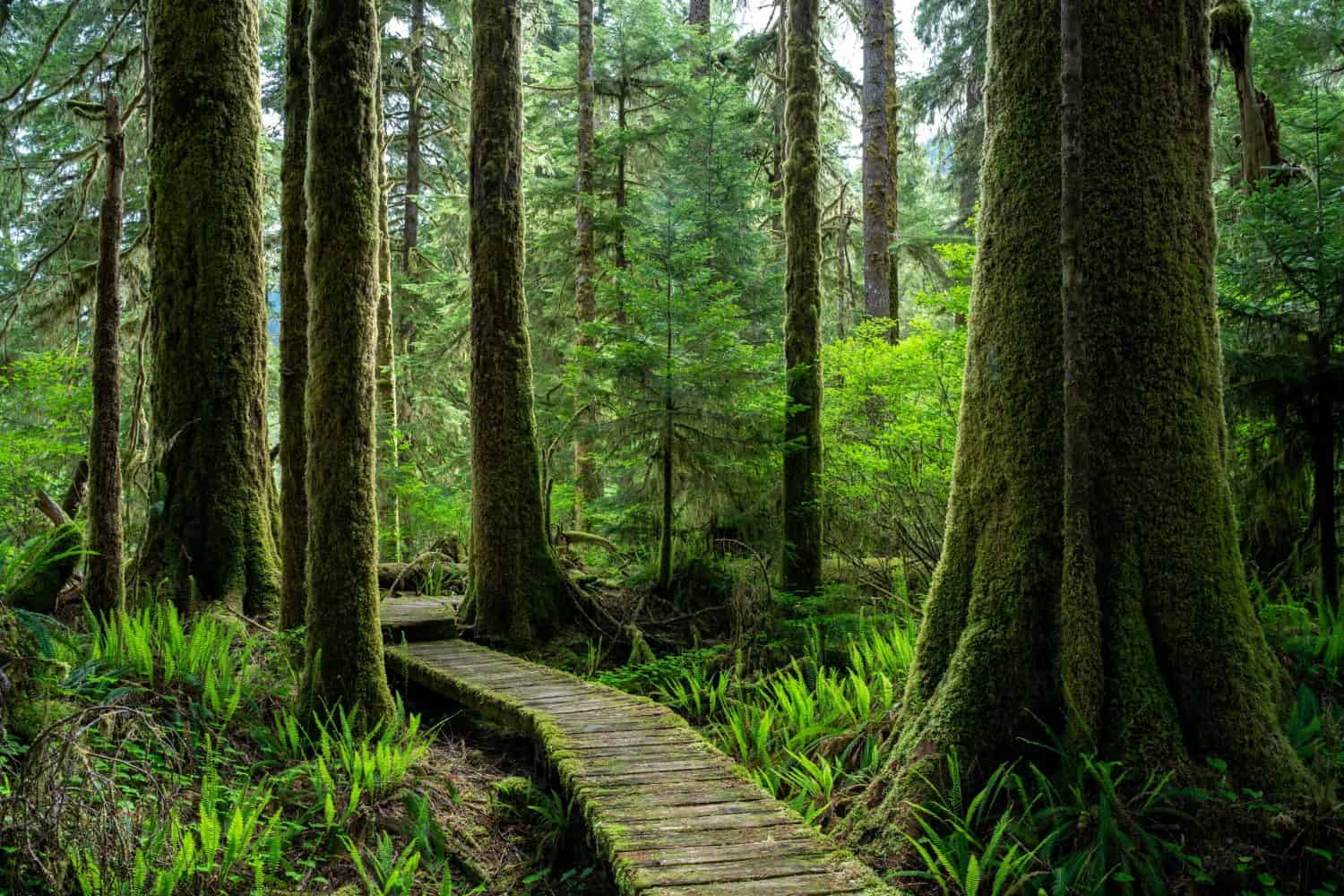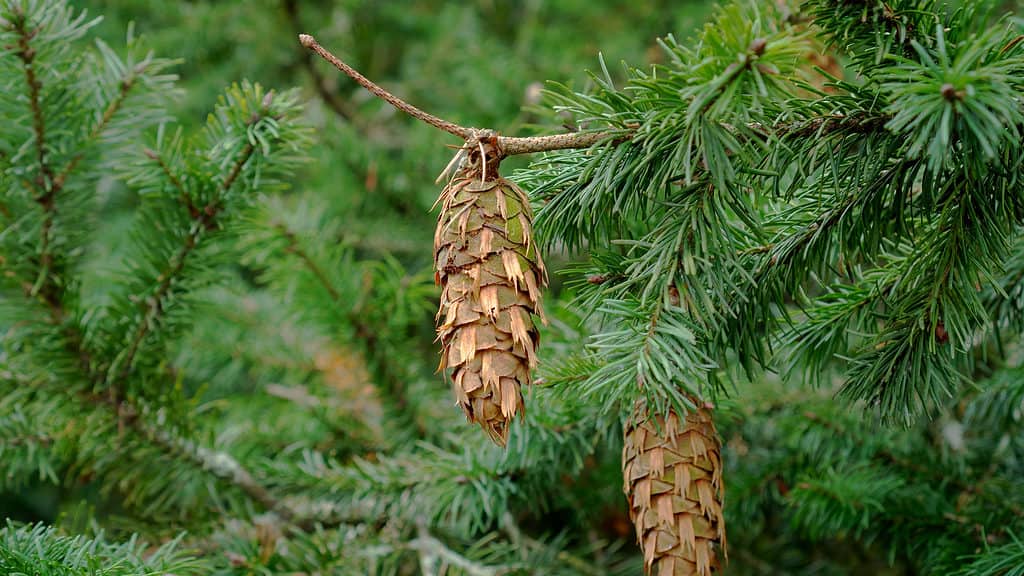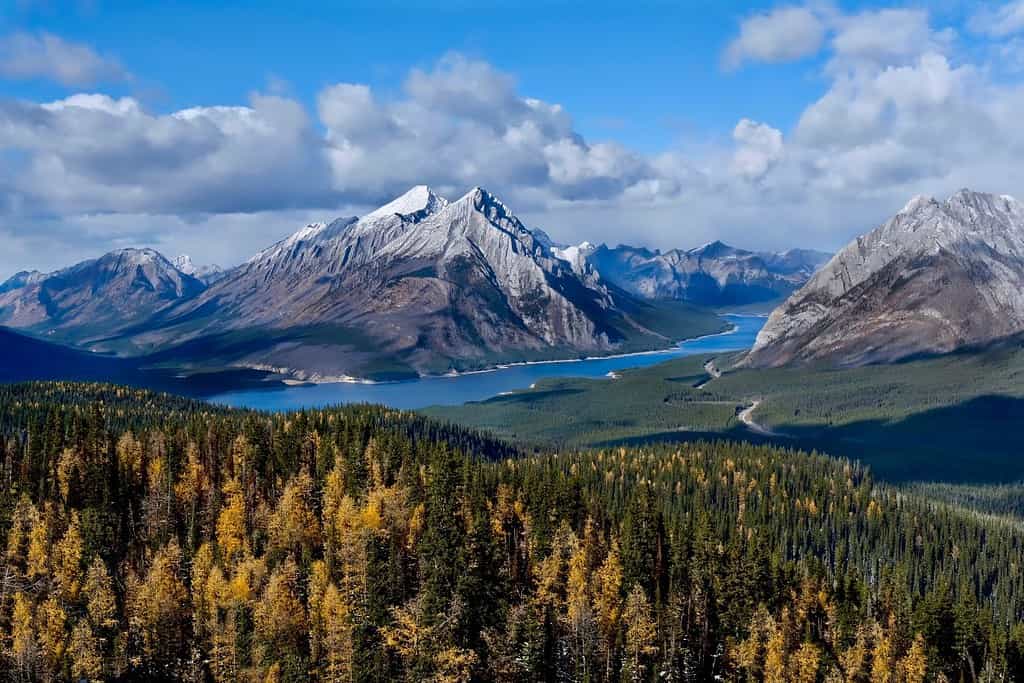Trees are an essential part of any climate. They provide oxygen while preserving soil and promoting cleaner air. However, the benefits that they offer go beyond their presence in nature. They also contribute to many multi-billion-dollar industries, employing millions of people during their harvest. The Douglas fir – one of the largest tree species in the world – is one of the biggest sources of timber in the United States, but their sustainable population sets them apart.
With so many different trees in the world, the similarities between the Douglas fir and the Sitka spruce aren’t surprising. After all, they are in the same genetic family. However, when it comes to choosing lumber or identifying your surroundings on a hike, knowing the difference is crucial. With differences in everything from the lowest temperature they can handle and the shape of their trunk, these trees are unique.
While both trees fall into the pine family, the Douglas fir isn’t even a true pine. The Sitka spruce, on the other hand, only differs from other pine trees because of the shorter needles. Let’s take a look at what else makes these two trees so different from each other.
Comparing Douglas Fir vs. Sitka Spruce Trees
| Douglas Fir | Sitka Spruce | |
| Classification | Kingdom: Plantae Clade: Tracheophytes Clade: Gymnospermae Division: Pinophyta Class: Pinopsida Order: Pinales Family: Pinaceae Genus: Pseudotsuga Species: Pseudotsuga douglasii | Kingdom: Plantae Clade: Tracheophytes Clade: Gymnospermae Division: Pinophyta Class: Pinopsida Order: Pinales Family: Pinaceae Genus: Picea Species: Picea sitchensis |
| Location | Western North America | Western North America |
| Natural habitat | Forest | Forest |
| USDA Hardiness Zone | Zones 4-6 | Zones 7-8 |
| Conservation Status in the US | Least Concern | Least Concern |
| Size | Up to 390 feet tall | Up to 330 feet tall |
| Shape | Pyramidal | Tall and slender |
| Foliage | Needle-like | Needle-like |
| Wood | Strong with many rings | Thin and scaly bark |
| Cones | Pendulous with persistent scales | Pendulous with thin, flexible scales |
| Uses | Construction, Christmas trees | Basket weaving, medicinal properties, timber, and paper. |
| Elevation Limit | 6,000-9,500 | Up to 3,900 feet |
The Key Differences Between Douglas Fir vs. Sitka Spruce Trees
Douglas Fir vs. Sitka Spruce Tree: USDA Hardiness Zone
The USDA Hardiness Zone describes the best weather and environment for these trees to grow. The USDA website features a map that breaks up each area across the country. Douglas fir primarily thrives in zones 4 to 6, which means that the minimum temperature it can handle is -30 to -20°F (zone 4). Some of these trees need milder climates with a minimum of 0 to -10°F.
Sitka spruce trees aren’t meant for cold minimum temperatures. They range from zone 7 to 8, meaning their coldest weather matches the highest minimum temperatures of the Douglas fir. Zone 8 ranges from 10°F to 20°F.
Douglas Fir vs. Sitka Spruce Tree: Location

Douglas fir trees cover over 1,300 miles between Canada and southern California.
©Zack Frank/Shutterstock.com
Both of these trees grow throughout North America, but the particular setting that they need to flourish is a bit different. California offers one of the biggest Douglas fir forests, nestled within the Klamath Mountains and several other ranges. According to the University of California Agriculture and Natural Resources, this tree primarily covers the western region of North America from 19° to 55° North in latitude.
As for the Sitka spruce, the department explains that you only find these trees from 39° to 61° North. They only grow on the west coast.
Douglas Fir vs. Sitka Spruce Tree: Size

The Quinault Big Sitka Spruce Tree is the largest one in recorded history, with a 58-inch circumference.
©Sarah S/Shutterstock.com
The size range of these two trees overlaps slightly. Typically, Sitka spruce trees grow to a maximum of 330 feet tall, measuring 16 feet in diameter across the trunk. No spruce species are as big as the Sitka variation, but the Douglas fir has it beat. The Douglas fir and coast redwood tree surpass the Sitka spruce tree as the tallest conifer species. Douglas firs usually grow 70-390 feet tall, but the biggest Douglas firs only grow along the coast.
Douglas Fir vs. Sitka Spruce Tree: Shape

While Douglas fir trees have more of a pyramidal shape, this wide platform gives them the roots to stand almost 400 feet tall.
©Wirestock Creators/Shutterstock.com
Depending on the growth stage, determining the difference between these trees with height alone is nearly impossible. Instead, if you want to differentiate between the Douglas fir and Sitka spruce trees, look at their overall shape. The Douglas fir tends to be more triangular, standing broad at the bottom like a pyramid. While the upper branches stretch up towards the sun, the lower branches droop down.
If you take the same view of a Sitka spruce tree, the trunk stands tall and cylindrical, and the branches don’t extend until nearly halfway up. With scaly brown bark on the trunk, they also have lower drooping branches. However, the upper branches extend horizontally instead.
Douglas Fir vs. Sitka Spruce Tree: Cones

The cones of these trees are one of the easiest ways to identify them.
©iStock.com/PAVEL IARUNICHEV
The cones of the Douglas fir and Sitka spruce trees vary slightly. Though both have a pendulous shape, the scales of the Sitka spruce tree are much thinner and longer (15-20 millimeters). They have the longest scales of any spruce tree, transitioning from green to pale brown as they mature. They produce black seeds.
The Douglas fir, on the other hand, has persistent scales, which separates it from other true firs. They have a 3-point bract shaped like a mouse.
Douglas Fir vs. Sitka Spruce Tree: Uses
Douglas fir produces high-quality lumber, offering enough strength to manufacture doors, windows, and similar structures. Flooring companies, furniture stores, and millwork services use this wood to craft their projects, especially when weather protection is a priority. They are also one of the most common trees to set up around the holidays.
On the other hand, the Sitka spruce tree has a light and soft wood with incredible strength. Like the Douglas fir, it is used for construction, but its acoustics make it the perfect wood to construct instruments.
Douglas Fir vs. Sitka Spruce Tree: Elevation

Douglas fir trees, paired with the Englemann spruce, cover the Rocky Mountains.
©Marina Poushkina/Shutterstock.com
One of the significant factors in any environment is the elevation these trees can handle. The elevation that the Douglas fir can tolerate depends on several factors. For instance, towards the middle of the Rocky Mountains, you only see them at 6,000 to 8,000 feet. As you go further south along the mountain range, the trees typically only occur within 8,000 to 9,500 feet of elevation.
Sitka spruce also has variations in the elevation it handles in different locations. The Sitka spruce trees in Alaska grow up to 3,900 feet in elevation, which is drastically lower than Douglas firs grow. In the state of Washington, its elevation shouldn’t exceed 2,000 feet. You’ll only see this tree below 1,500 feet if you’re in Oregon or California.
BONUS: Both Trees Are Among The Longest-Living And Tallest Members of the Pine Family
While these two trees have many significant differences, their similarities make them even more interesting. Their hardiness zones are similar, but their species are different enough to live near each other without intermingling. They are both a part of the pine family, known for their massive size. The record of the largest living Douglas fir (326 feet) is only 7 feet taller than the largest Sitka spruce tree ever!
These trees also have a spectacular lifespan. They both grow quickly, but the Sitka spruce lives to be up to 800 years old. The Douglas fir has a broader range from 500 to 1,000 years old, though some records suggest that this species reaches over 1,400 years old when undisturbed.
The photo featured at the top of this post is © IrinaK/Shutterstock.com
Thank you for reading! Have some feedback for us? Contact the AZ Animals editorial team.







